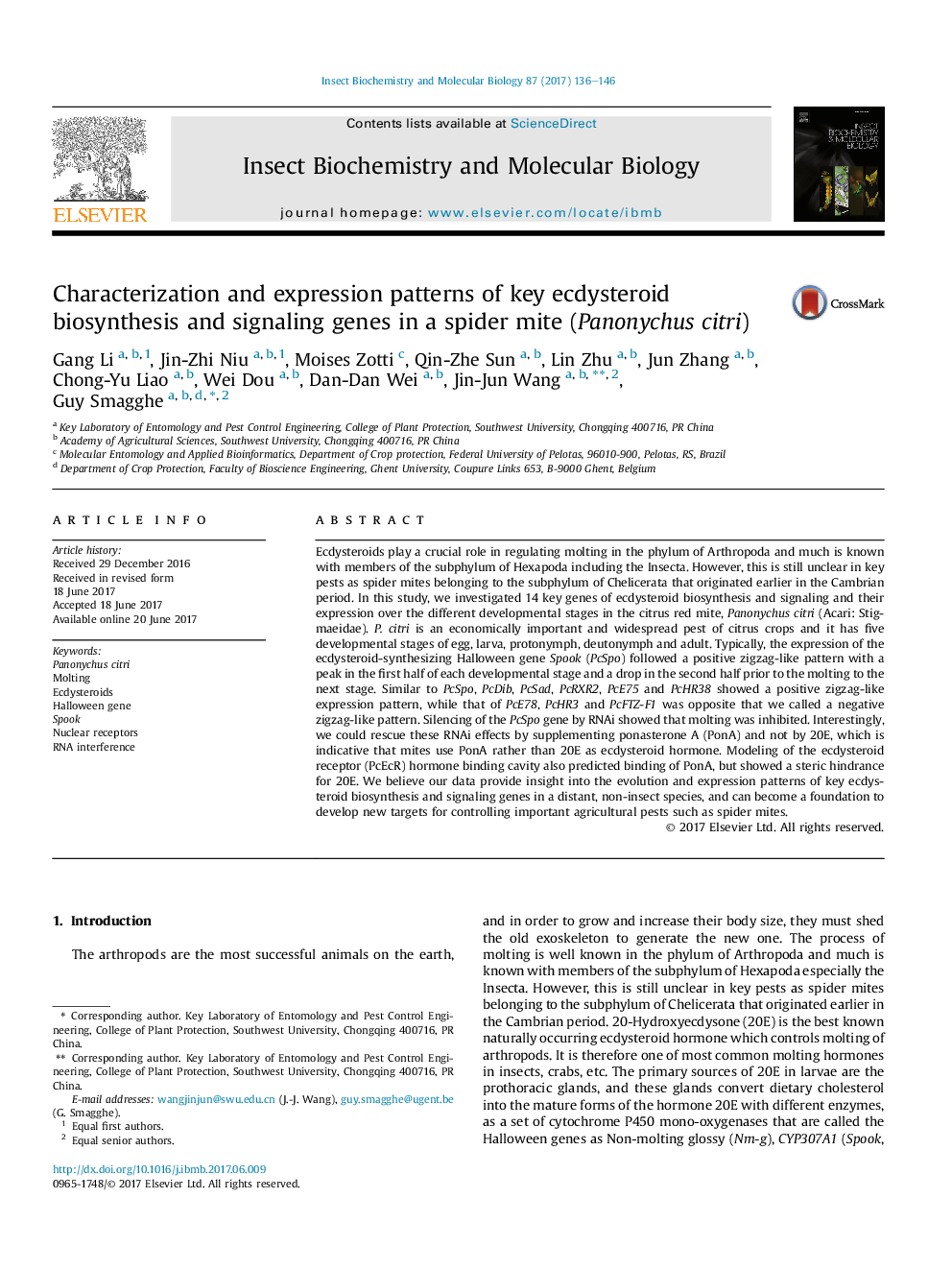| کد مقاله | کد نشریه | سال انتشار | مقاله انگلیسی | نسخه تمام متن |
|---|---|---|---|---|
| 5511140 | 1539465 | 2017 | 11 صفحه PDF | دانلود رایگان |

- Fourteen ecdysteroid-response genes were identified in the citrus red mite (Panonychus citri).
- Ecdysteroid biosynthesis and signaling genes showed dynamic expression around the molting periods.
- Silencing of PcSpo delayed molting and affected expression of other ecdysteroid synthesis and response genes.
- Ponasterone A but not 20E suppressed the effects of PcSpo-RNAi.
- Modeling of the PcEcR ligand-binding domain predicted binding of ponasterone A but a steric clash for 20E.
Ecdysteroids play a crucial role in regulating molting in the phylum of Arthropoda and much is known with members of the subphylum of Hexapoda including the Insecta. However, this is still unclear in key pests as spider mites belonging to the subphylum of Chelicerata that originated earlier in the Cambrian period. In this study, we investigated 14 key genes of ecdysteroid biosynthesis and signaling and their expression over the different developmental stages in the citrus red mite, Panonychus citri (Acari: Stigmaeidae). P. citri is an economically important and widespread pest of citrus crops and it has five developmental stages of egg, larva, protonymph, deutonymph and adult. Typically, the expression of the ecdysteroid-synthesizing Halloween gene Spook (PcSpo) followed a positive zigzag-like pattern with a peak in the first half of each developmental stage and a drop in the second half prior to the molting to the next stage. Similar to PcSpo, PcDib, PcSad, PcRXR2, PcE75 and PcHR38 showed a positive zigzag-like expression pattern, while that of PcE78, PcHR3 and PcFTZ-F1 was opposite that we called a negative zigzag-like pattern. Silencing of the PcSpo gene by RNAi showed that molting was inhibited. Interestingly, we could rescue these RNAi effects by supplementing ponasterone A (PonA) and not by 20E, which is indicative that mites use PonA rather than 20E as ecdysteroid hormone. Modeling of the ecdysteroid receptor (PcEcR) hormone binding cavity also predicted binding of PonA, but showed a steric hindrance for 20E. We believe our data provide insight into the evolution and expression patterns of key ecdysteroid biosynthesis and signaling genes in a distant, non-insect species, and can become a foundation to develop new targets for controlling important agricultural pests such as spider mites.
149
Journal: Insect Biochemistry and Molecular Biology - Volume 87, August 2017, Pages 136-146